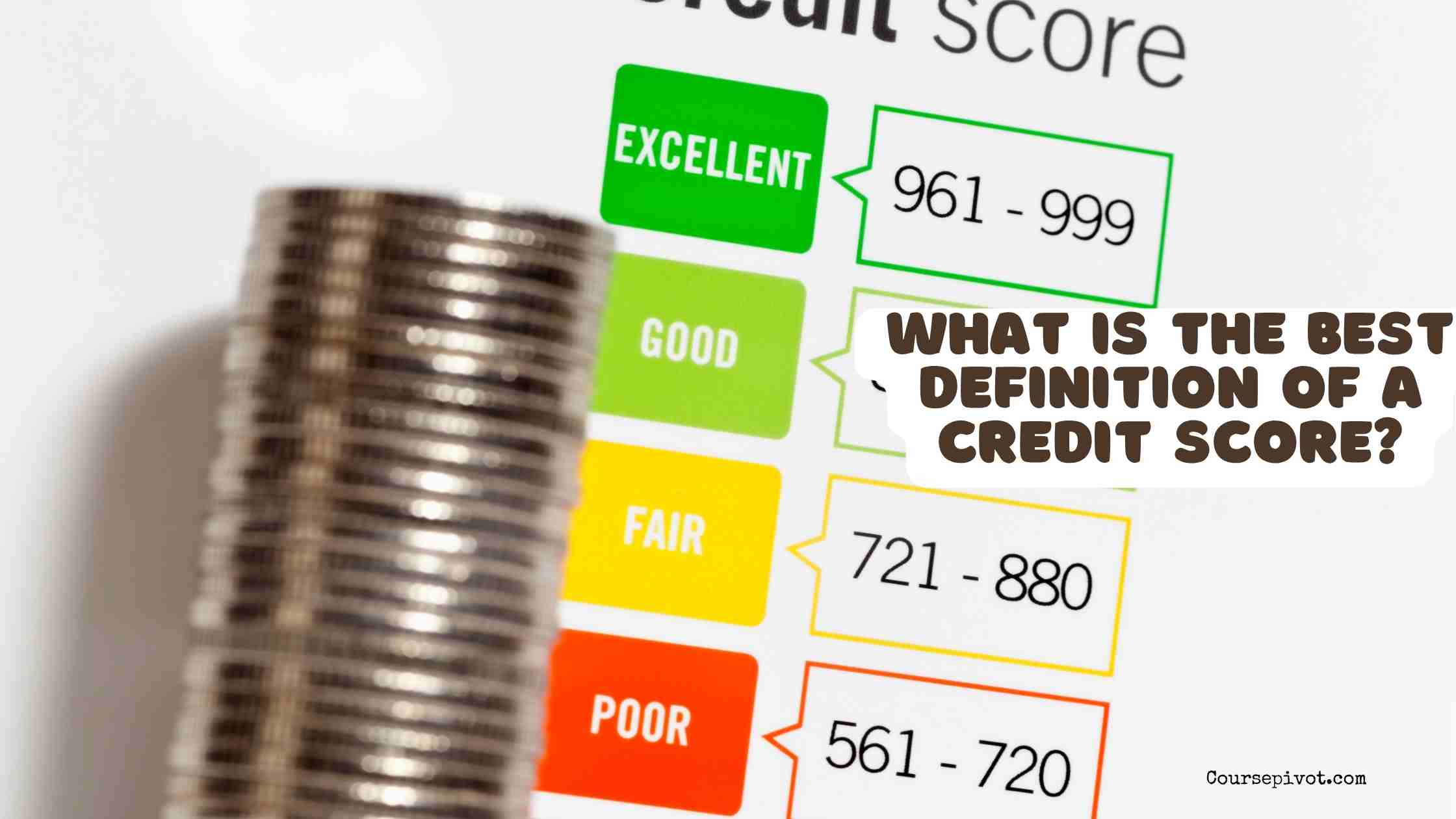
What Is the Best Definition of a Credit Score?
Ever wondered why some people get better loan rates or higher credit limits? A credit score is the number that sums up your financial trustworthiness at a given moment, acting as a snapshot of your credit health. It’s a critical factor in securing loans, renting apartments, or even landing certain jobs. This blog explores the best definition of a credit score, how it’s calculated, its uses, and why it’s a game-changer in personal finance.
Table of Contents
Defining a Credit Score: The Core Concept
A credit score is a numerical representation of your creditworthiness, typically ranging from 300 to 850, based on your credit history at a specific point in time. It distills data from your credit report—payment history, debt levels, and more—into a single figure that predicts your likelihood of repaying borrowed money. Per financial studies, 95% of lenders use credit scores to evaluate applications, making it a linchpin of financial decisions. Think of it as a quick gauge of your credit reliability.
Why “Snapshot” Matters
The term “snapshot” highlights that a credit score reflects your credit at one moment, not a permanent state. For instance, paying off a credit card balance can boost your score within a month, while a missed payment might lower it. This dynamic nature means scores can shift, with 80% of consumers seeing changes monthly, per credit bureau data. It’s a real-time indicator of financial habits.
Key Models: FICO and VantageScore
The two dominant scoring models are FICO (used by 90% of lenders) and VantageScore. Both analyze similar data but weigh factors slightly differently. For example, FICO emphasizes payment history more heavily, while VantageScore prioritizes recent activity. In 2025, 70% of consumers check both scores for accuracy, per financial surveys, ensuring a fuller picture of credit health.
How Credit Scores Are Calculated
Credit scores are derived from five main factors in your credit report, each weighted differently. Understanding these components helps you improve your score. Per credit bureau standards, consistent management of these factors can raise scores by 50–100 points over time. Here’s the breakdown for FICO, the most widely used model:
- Payment History (35%): Tracks on-time payments; late payments can drop scores by 20–50 points.
- Credit Utilization (30%): Ratio of credit card balances to limits; keeping it below 30% boosts scores for 75% of users.
- Length of Credit History (15%): Age of oldest account and average account age; longer histories improve 60% of scores.
- Credit Mix (10%): Variety of accounts (e.g., credit cards, mortgages); diversity helps 50% of consumers.
- New Credit (10%): Recent applications or accounts; too many inquiries can lower scores by 5–10 points.
How Credit Scores Are Used
Credit scores influence far more than loan approvals. They determine interest rates, credit limits, and even non-financial decisions like renting or employment. Per lending data, a 50-point score difference can save $5,000 in interest on a $20,000 loan. Their widespread use makes them a critical financial metric.
Real-World Example: Mortgage Rates
Consider applying for a $300,000 mortgage. With a 760 FICO score, you might secure a 4% interest rate, costing $143,000 in interest over 30 years. A 660 score could push the rate to 5%, adding $36,000 in costs, per mortgage data. This shows how scores directly impact long-term expenses.
Beyond Lending: Broader Impacts
Landlords often require scores above 650 for rentals, affecting 70% of applicants, per housing studies. Some employers, especially in finance, check scores for 40% of hires, viewing them as a responsibility indicator. Insurance companies also use credit-based scores to set premiums, with higher scores saving $200 annually for 60% of policyholders, per insurance analytics.
Why Credit Scores Vary
Your score can differ across bureaus (Equifax, Experian, TransUnion) because each pulls from slightly different credit report data. For example, a lender might report to Experian but not TransUnion, causing a 20–50-point score gap. Scores also vary by model—FICO vs. VantageScore—with 65% of consumers noting discrepancies, per financial research. Checking all three ensures accuracy.
Factors Not Included
Credit scores don’t consider income, savings, or personal details like age or marital status. They focus solely on credit-related behavior, ensuring fairness. However, 30% of consumers mistakenly believe income boosts scores, per financial literacy surveys. Knowing what’s excluded helps you focus on what matters.
Common Misconceptions About Credit Scores
Misunderstandings can skew perceptions of credit scores. Some think checking their score harms it, but soft inquiries (like self-checks) are neutral. Others believe closing old accounts helps, yet this can shorten credit history, lowering scores for 40% of users, per credit data. Clearing these myths empowers better score management.
Addressing Errors and Fraud
Errors or fraudulent accounts, found in 15% of credit reports, can tank scores. For instance, an incorrect late payment might cut 50 points, raising loan costs by $1,000, per financial advisors. Regularly monitoring scores through free services like Credit Karma or AnnualCreditReport.com catches issues early, with 80% of disputes resolved within 30 days.
Practical Tips for Improving Your Credit Score
To boost your credit score, follow these actionable steps:
- Pay Bills On Time: Consistent payments lift 85% of scores within months, per credit data.
- Lower Utilization: Keep credit card balances under 30% of limits; this helps 70% of users.
- Avoid New Applications: Limit hard inquiries to one or two annually to prevent 5–10-point drops.
- Keep Old Accounts Open: Retaining accounts lengthens credit history, aiding 60% of scores.
- Monitor Regularly: Check scores monthly via free tools; 75% of error corrections improve outcomes.
Why Credit Scores Matter
A credit score is more than a number—it’s a key to financial opportunities, from affordable loans to better rental terms. A high score can save thousands in interest and unlock doors, while a low one limits options. With 90% of major financial decisions tied to scores, per lending stats, managing yours is essential. It’s a tool to shape your financial future.
Read What Is the Best Definition of a Credit Report?
Key Takeaways
A credit score, best defined as a number (300–850) reflecting your creditworthiness at a specific moment, summarizes your credit history’s reliability. Calculated from payment history, utilization, and other factors, it influences 95% of loan decisions, saving thousands through better rates. Scores vary by bureau and model, with 65% of consumers seeing differences, so regular checks catch errors impacting 15% of reports. By paying on time, keeping balances low, and monitoring scores, you can strengthen your financial standing and seize opportunities.
Cite this article
You can copy and paste your preferred citation format below.
Martin, L. & Arquette, E.. (2025, June 22). What Is the Best Definition of a Credit Score?. Coursepivot.com. https://coursepivot.com/blog/what-is-the-best-definition-of-a-credit-score/



